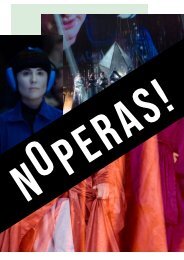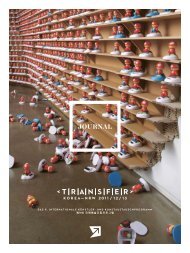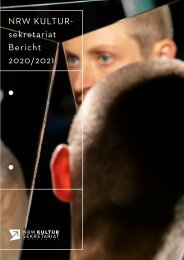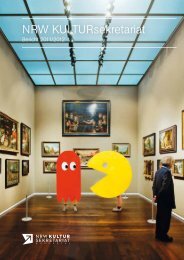Tanzrecherche NRW: Classical Tradition / Modern Society by Mirjam Otten
A handbook for creators and decision-makers on keeping classical ballet relevant
A handbook for creators and decision-makers on keeping classical ballet relevant
You also want an ePaper? Increase the reach of your titles
YUMPU automatically turns print PDFs into web optimized ePapers that Google loves.
PUBLIC RELATIONS<br />
& MEDIA<br />
‘Exposure is (…) the first step to relevance’ (Schnell, 2014: 41). Reviewing a range of<br />
actions taken <strong>by</strong> dance companies to embrace modern audiences, Schnell (2014)<br />
describes ballet’s negative public image as the main hurdle to its continued<br />
relevance. In short, ‘(c)lassical ballet has a public relations problem’ (Brinson, 1989:<br />
697).<br />
To Brinson (1989), a first way to address this is changing ballet coverage in print<br />
media. He points to the importance of dance criticism and reportage in shaping the<br />
role of ballet in society. His suggestion is that journalistic coverage should be<br />
ample, aware of the significance of dance and focused on the deeper artistic<br />
dimension of staged works. In order to achieve this, companies might want to<br />
provide more tailored insights events or informational resources for the press.<br />
Beyond print media, the emergence of the film industry has taken an important role<br />
in changing ‘the public’s appetite for, and acceptance of, dance’ (Johnson and<br />
Snyder, 1999: 7), as well as increasing its portability and accessibility (Fisher, 2003).<br />
Because of this, many directors today, for example Lourdes Lopez, AD of Miami City<br />
Ballet, speak in favour of increased broadcasting and televising of ballet when<br />
asked what ballet needs to flourish in the future (Carman and Cappelle, 2014). This<br />
can be done in many different ways: Alastair Marriott would like to see increased<br />
distribution of online content via digital platforms or television channels such as<br />
SkyArts. Katy Sinnadurai points to public live streaming of performances, which can<br />
eliminate financial access barriers and thus helps reach as wide an audience as<br />
possible.<br />
Expanding the view to wider media exposure, Crystal Costa highlights the large<br />
amout of publicity and marketing dedicated to sports. She argues that this heavy<br />
exposure biasses the public’s preferences towards sports rather than culture. This<br />
insight stresses the importance of widespread and engaging media campaigns in<br />
culivating a social appetite for ballet.<br />
<strong>Classical</strong> <strong>Tradition</strong> // <strong>Modern</strong> <strong>Society</strong> 32

















